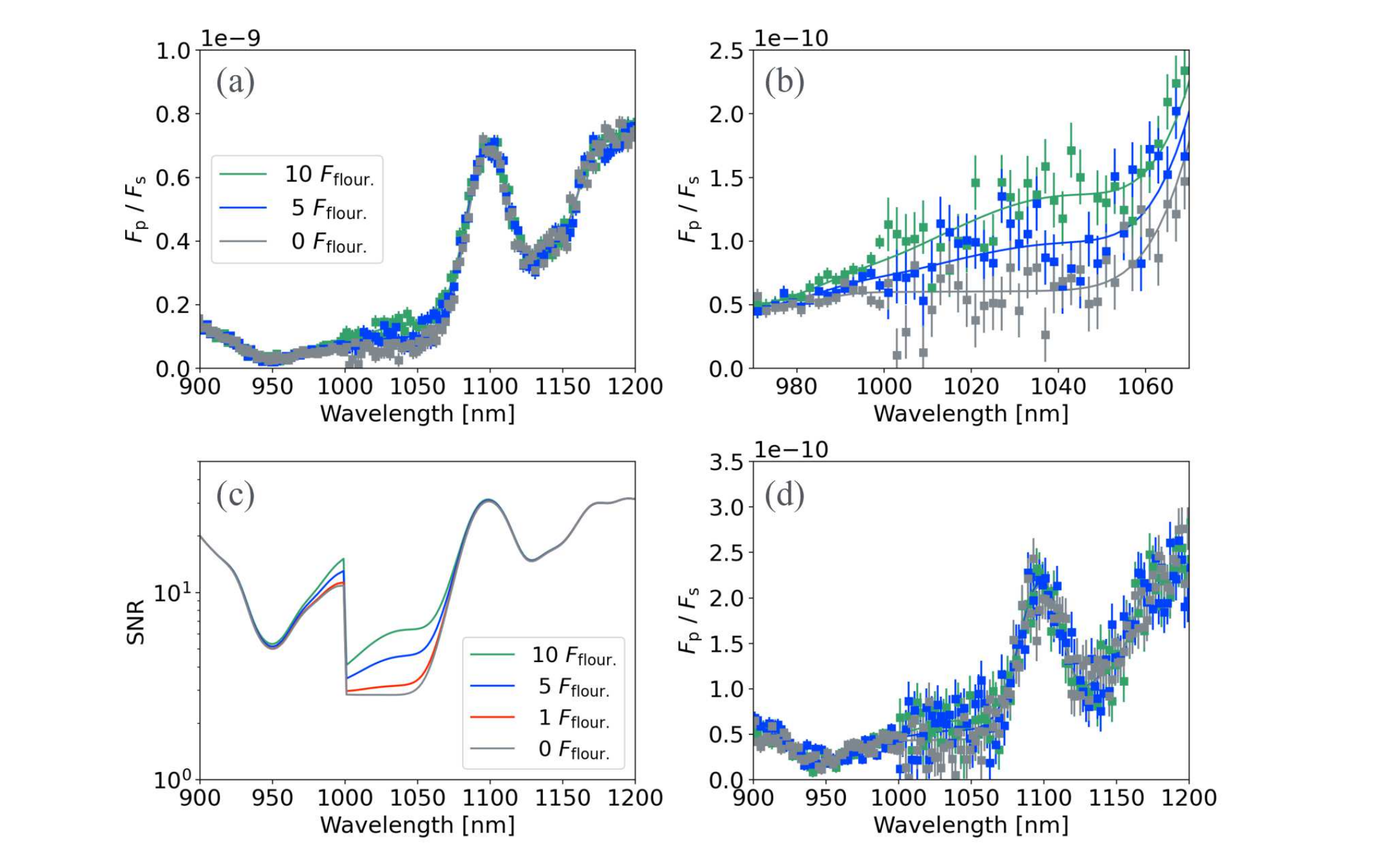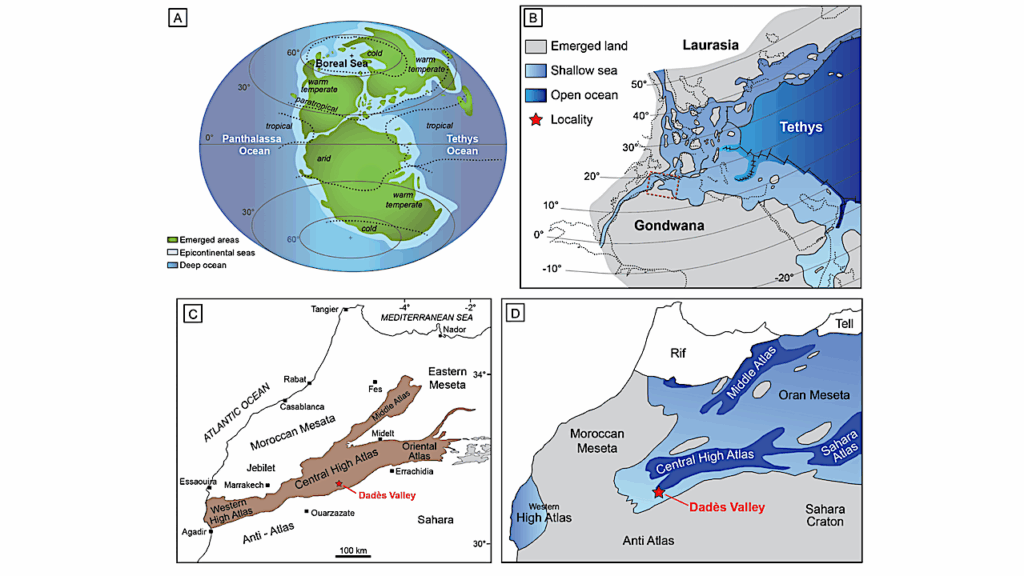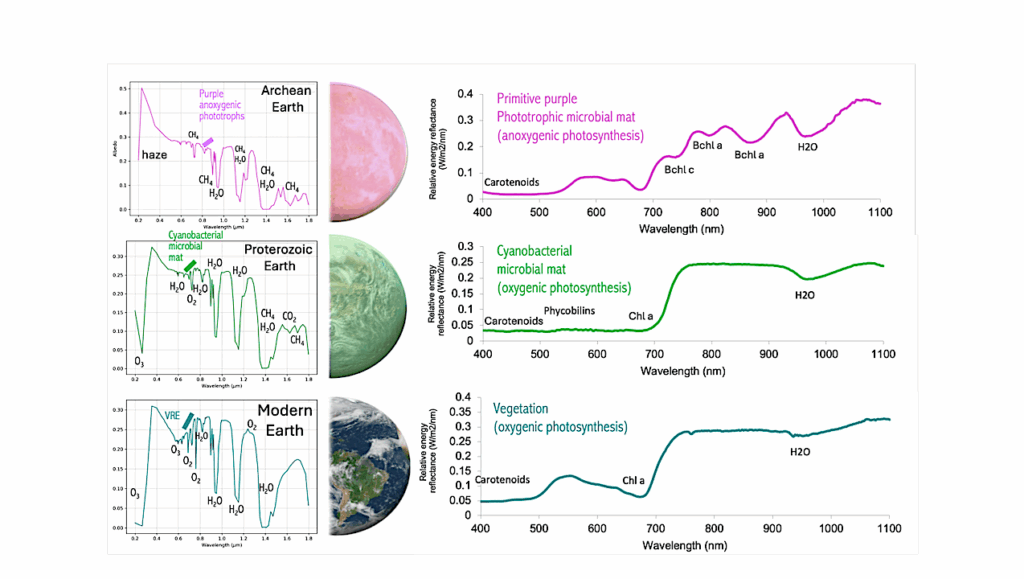Photosynthetic Fluorescence From Earth-Like Planets Around Sun-Like Aand Cool Stars

Remote sensing of the Earth has demonstrated that photosynthesis is traceable as the vegetation red edge (VRE), which is the steep rise in the reflection spectrum of vegetation, and as solar-induced fluorescence.
This study examined the detectability of biological fluorescence from two types of photosynthetic pigments, chlorophylls (Chls) and bacteriochlorophylls (BChls), on Earth-like planets with oxygen-rich/poor and anoxic atmospheres around the Sun and M dwarfs.
Atmospheric absorption, such as H2O, CH4, O2, and O3, and the VRE obscure the fluorescence emissions from Chls and BChls. We found that BChl-based fluorescence for wavelengths of 1000-1100 nm, assuming the spectrum of BChl b-bearing purple bacteria, could provide a suitable biosignature but only in the absence of the water cloud coverage or other strong absorbers near 1000 nm. The Chl fluorescence is weaker for several reasons, e.g., spectral blending with the VRE.
The apparent reflectance excess is greatly increased in both Chl and BChl cases around TRAPPIST-1 due to fluorescence and stellar absorption lines. This could be a promising feature for detecting the fluorescence around ultracool red dwarfs by follow-up ground-based observations with high spectral resolution; however, it requires a long time around Sun-like stars, even for a LUVOIR-like space mission.
Moreover, the simultaneous detection of fluorescence and VRE is key to identifying traces of photosynthesis because absorption, reflectance, and fluorescence are physically connected. For further validation of fluorescence detection, the nonlinear response of biological fluorescence as a function of light intensity could be considered.
Yu Komatsu, Yasunori Hori, Masayuki Kuzuhara, Makiko Kosugi, Kenji Takizawa, Norio Narita, Masashi Omiya, Eunchul Kim, Nobuhiko Kusakabe, Victoria Meadows, Motohide Tamura
Subjects: Earth and Planetary Astrophysics (astro-ph.EP)
Cite as: arXiv:2301.03824 [astro-ph.EP] (or arXiv:2301.03824v1 [astro-ph.EP] for this version)
https://doi.org/10.48550/arXiv.2301.03824
Focus to learn more
Related DOI:
https://doi.org/10.3847/1538-4357/aca3a5
Focus to learn more
Submission history
From: Yu Komatsu
[v1] Tue, 10 Jan 2023 07:42:43 UTC (4,086 KB)
https://arxiv.org/abs/2301.03824
Astrobiology








